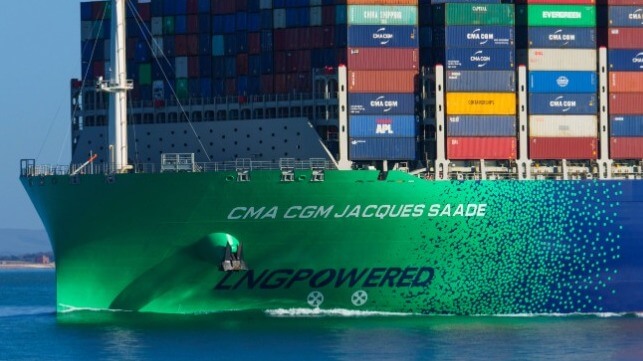Industry Calls for Measurement and Regulation to Tackle Methane Slip

Focusing on the problem of methane slip in the “well-to-wake” approach, an industry-led group released its first report detailing research, trials, and the required steps to create greater understanding and eliminate the problems of methane slip associated with liquefied natural gas (LNG) vessels. The report outlines the problems of accurately measuring the releases of unburnt methane while calling for the creation of a globally standardized measurement and monitoring framework and the creation of technology-centric regulatory frameworks to support the development and use of abatement technologies.
The initiative known as MAMII (Methane Abatement in Maritime Innovation Initiative) was launched in 2022 and led by the SafetyTech Accelerator from Lloyd’s Register with leading industry companies including Capital Gas, Carnival Corporation, Celsius Tankers, Chevron, Knutsen, Maran Gas Maritime, MSC, Mitsui O.S.K. Lines, MISC, NYK Line, Seapeak, Seaspan Corporation, Shell, Total Energies, and more. It was formed to address methane slip from ships and aims to support the steps required to reduce the environmental impact of LNG by reducing methane slip to near zero.
The group released its first report reviewing its detailed analysis looking at issues ranging from regulations to measurement and reporting, the efforts to abate, the cost of the technology, and the steps in the supply chain from the production through delivery and bunkering to use on the vessels.
They reiterate the industry’s position that new engines are making great strides in reducing methane slip while acknowledging challenges with older engines. They looked at other parts of the supply chain saying it will be easier to address issues upstream and during bunkering. They highlight deliberate releases during refueling or purging fuel lines as well as the need to identify and address leaks quickly.
The report concludes that the industry needs more data to assess the level and impact of methane released by LNG-fueled ships. Finding that it lacks unified and consistent measurement tools, MAMII reports it is already taking action by developing measurement guidance while lining up trials and focusing on the most promising solutions.
“From better engine combustion to the abatement or catalysis of harmful gases and the blending of hydrogen with traditional fuels, the range and potential of these technologies have exceeded our expectations,” said Panos Mitrou, Chairman of MAMII. “It’s clear that with informed and early decision-making, we have the tools to abate methane. Yet, without a universally accepted certification method or regulatory framework providing business-critical incentives, the progress and adoption of these technologies will face significant delays.”
They are also calling on the industry to “demystify well-to-tank emissions” as part of an effort to certify the performance of LNG producers and bunker suppliers. Addressing technology, they say further innovation is imperative as well as exploring combining technologies such as shaft generators and tools to tackle fugitive emissions.
Technology they report needs to be validated to demonstrate the credibility and accuracy of solutions. They believe that integrating methane into regulatory schemes will support the viability of abatement technology and support its development.
They point out the danger that lacking to take the steps could undermine the adoption of LNG-fueled ships as an alternative despite its potential to reduce emissions and reach targets to reduce carbon emissions.
No comments:
Post a Comment